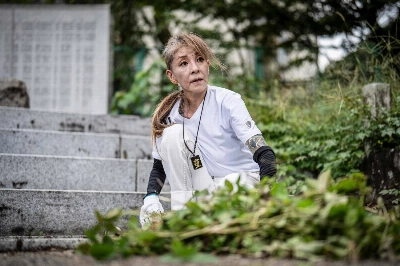Much can be learned about the factual bones of history by reading books, but the pictures that have survived the years flesh out better what life was actually like before the arrival of the electricity, running water and phones that we now take for granted.
The current exhibition of genre paintings at the Idemitsu Museum displays the world of ordinary Japanese people through images of daily work, household life, sickness and old age, sightseeing, leisure and amusements, as well as scenes of the exotic foreigners who landed in western Japan during the late 16th century. While one or two works date back as far as the Heian Period (794-1185), most were painted during the 17th and 18th centuries when the country was unified in peace and a booming economy sustained new directions in artistic exploration and a fresh interest in the increasingly colorful daily scenes.
The earliest genre paintings echo the Buddhist teaching that old age and decay is our natural lot, and that suffering is the result of desire. At the Idemitsu, two hanging scrolls show the kings of hell administering their judgments, with graphic depictions of the horrendous torments in store for cringing sinners. It is chilling to think that the maiming, tearing and burning on display were not merely imaginary, but were in reality standard punishments of that time.


















With your current subscription plan you can comment on stories. However, before writing your first comment, please create a display name in the Profile section of your subscriber account page.